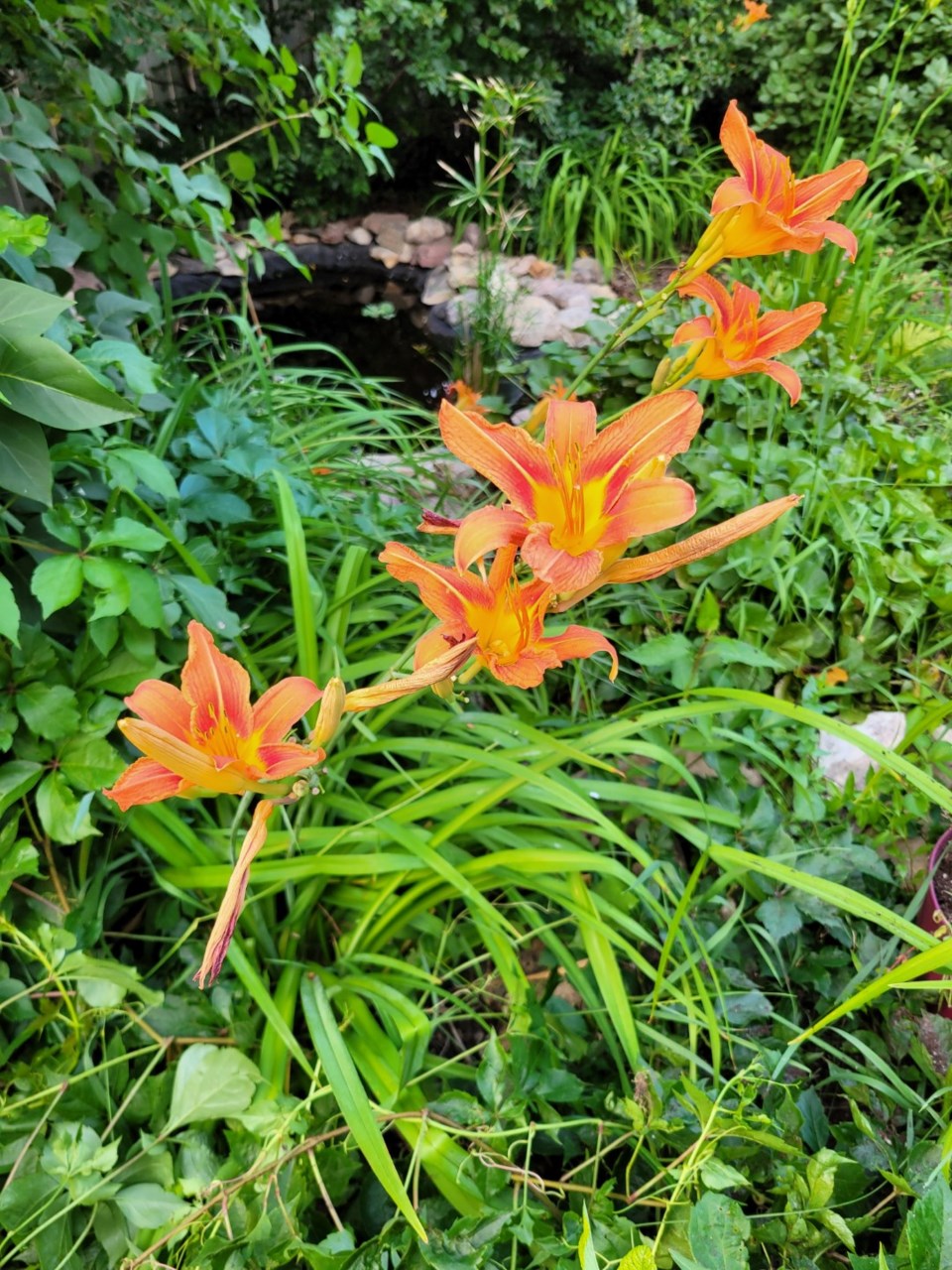Hemerocallis spp. (daylilies)
Don’t be put off by the name. They resemble lilies and each flower blooms for only one day, thus the common name. But most mature clumps have masses of flowers and provide colour over several weeks. And they are tough and long-lived. They were introduced to Europe in the mid-16th century and quickly became naturalized. As the renowned British gardener, William Robinson, observed long ago, "Few plants can be grown with so little trouble and give such a valuable return."
Food for thought
Native to China, Manchuria, Mongolia, Siberia, Korea and Japan, daylilies were crop plants for thousands of years. The buds, flowers and roots were used in food. In traditional Chinese medicine, the dried flower buds were recommended as an aphrodisiac. The peanut-like tubers, borne in clusters on the roots, can be boiled in salted water or fried and have a taste similar to sweet corn. The buds and flowers can be battered and fried as a fritter. The flowers can be added to soups or used as a garnish in meat dishes.
Today there are several species which are widely planted in northern gardens and well over a thousand varieties available. In the last several decades breeders have worked toward developing smaller plants (using H. minor and H. nana) for urban landscapes in more colours, many with thicker petals, reflexed petals and contrasting throats (colours) as well as repeat bloom. These are mostly clumping rather than spreading in habit.
If you are in the vicinity, visit the Beausejour Daylily display in Beausejour, Manitoba, about 50 km northeast of Winnipeg. It’s the only American Hemerocallis Society display garden on the Canadian prairies. Check out their website at www.beausejourdaylilygardens.com
Daylily classification
Daylilies have long been divided into several groups based on their habits and hardiness.
Dormant (d) types are truly herbaceous and become dormant with the onset of winter. These are the hardiest and most adapted to northern gardens.
Evergreen (e) types remain green through the winter. These are the least hardy and not likely to survive a prairie winter.
Semi-evergreen (s-e) types are intermediate between dormant and evergreen. Some have proven hardy in our gardens.
Many modern daylilies are tetraploid. This means that instead of the normal two sets of chromosomes (diploid), they have four sets. Advantages of tetraploid daylilies include larger flowers, stronger stems, more intense colours, heavier substance to the flowers and foliage and more vigorous growth. They give breeders much greater combinations of characteristics from which to make selections.
Daylilies form clumps from 30 to 90 centimetres in height with long, narrow, gently arching, grassy, green leaves. The numerous flowers on leafless stems consist of six petals, in all colours but blue. They can be ruffled, re-curved, single or double. Many of the yellow varieties are scented.
They are best placed in full sun or partial shade but will bloom more in sun. Although fairly adaptable, they give their best performance in deep, fertile, well-drained soil. Most are drought tolerant once established but perform better with even moisture. Divide them every four or six years or when they appear over-crowded and less floriferous. Avoid high-nitrogen fertilizers that result in floppy foliage and fewer flowers.
Daylilies may be naturalized, used as a ground cover or for massing or placed in a perennial border. They are excellent as waterside plantings as long as the soil is well drained. Increase them through spring or late summer division.
The species may be difficult to source commercially and are probably best obtained through a plant exchange of a local horticultural society or garden club or at specialized nurseries listed on the Beausejour Daylily Display Garden website. The number of cultivars can be simply overwhelming.
H. lilio-asphodelus (syn. H. flava), the lemon daylily, introduced to Europe in 1570, has light, clear yellow, fragrant flowers in late spring. It is a good colonizer. It is 75 to 90 cm (30-36 in.) in height, opens about midday and remains open through much of the evening.
H. fulva, the tawny daylily, was introduced to European gardens in 1576. It has orange flowers in late summer, is very drought-tolerant and excellent for naturalizing. 'Kwanso flore pleno' is a double form, introduced from Japan in 1864, with larger flowers that bloom a little later.
This column is provided courtesy of the Saskatchewan Perennial Society (SPS; [email protected]). Check our website () or Facebook page () for a list of upcoming gardening events.




